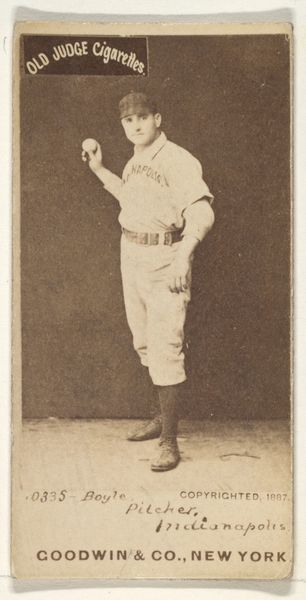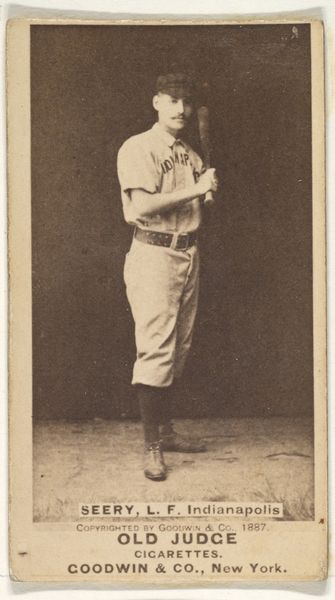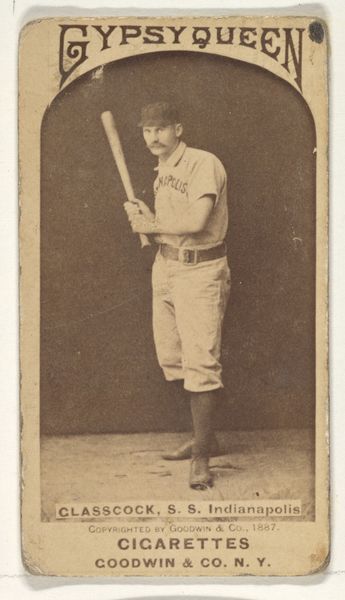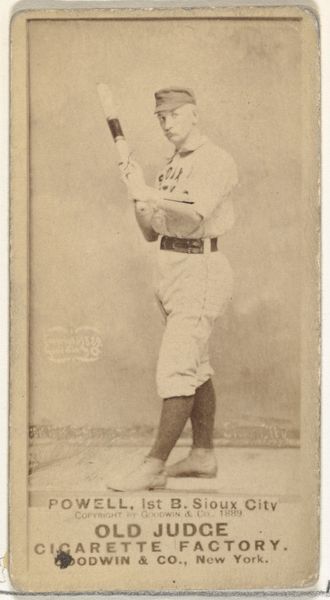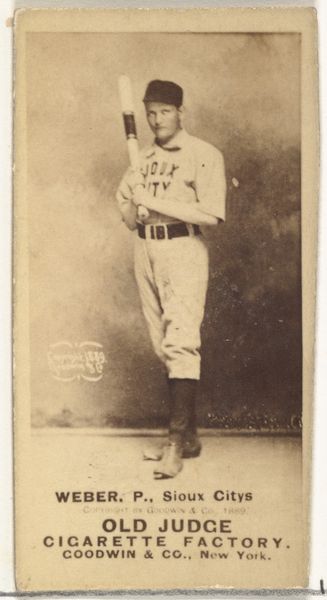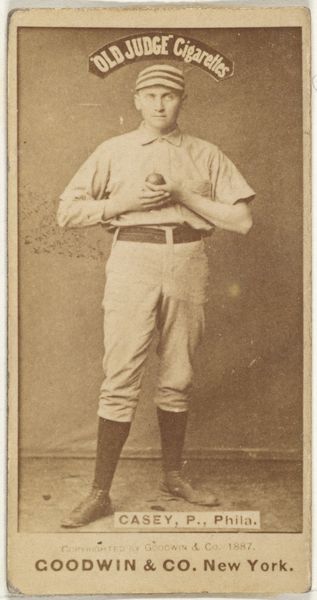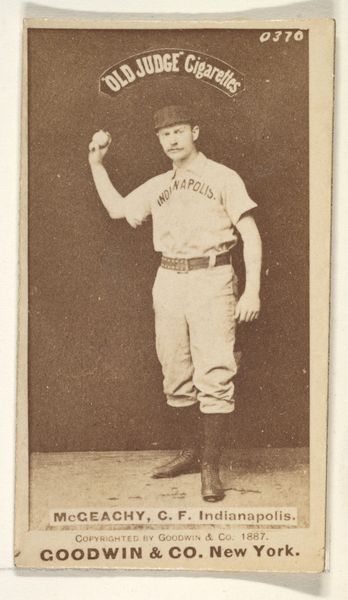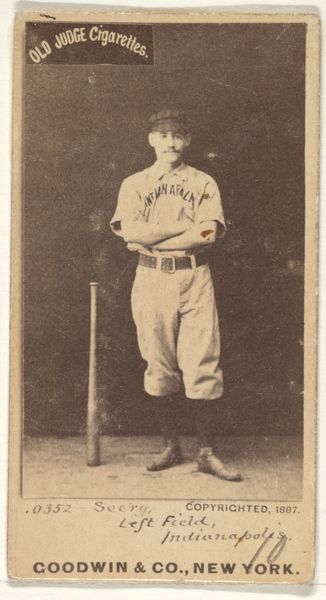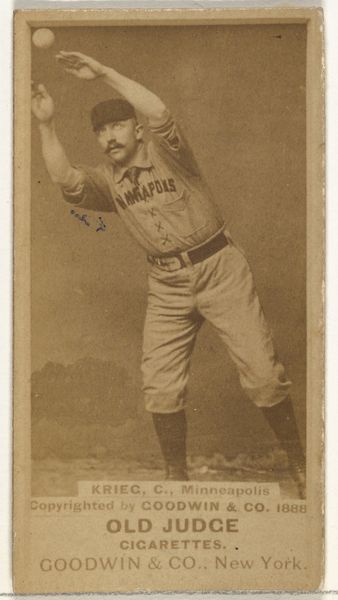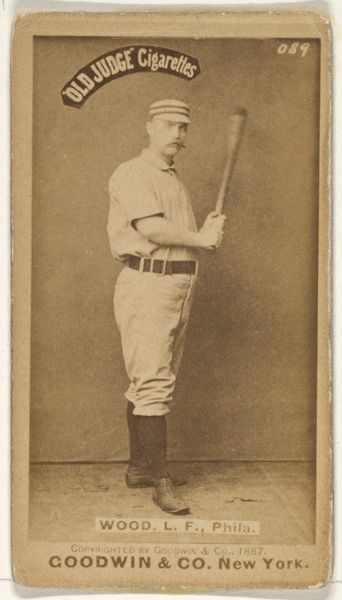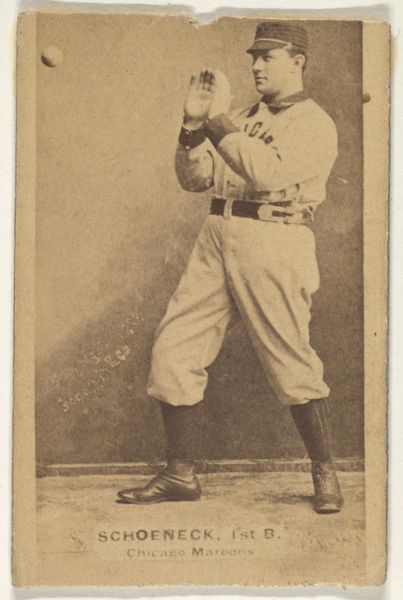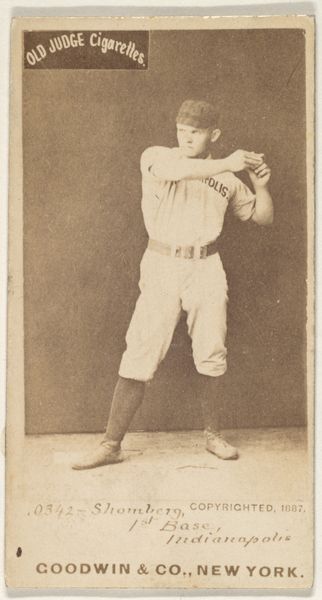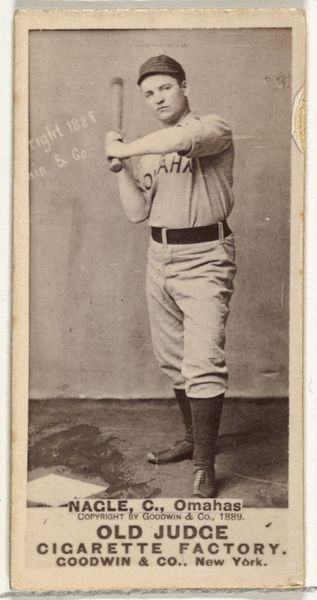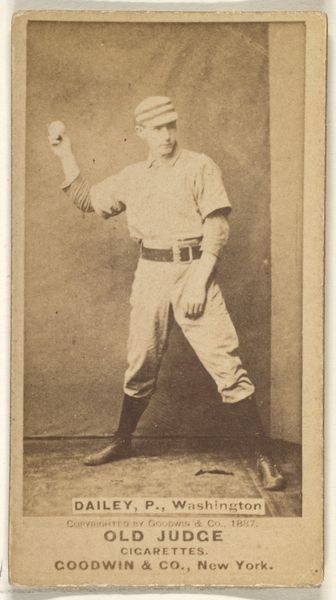
Glasscock, Shortstop, Indianapolis, from the Old Judge series (N172) for Old Judge Cigarettes 1887
0:00
0:00
drawing, print, photography, albumen-print
#
portrait
#
drawing
# print
#
impressionism
#
baseball
#
photography
#
19th century
#
albumen-print
Dimensions: sheet: 2 11/16 x 1 3/8 in. (6.9 x 3.5 cm)
Copyright: Public Domain
Editor: Here we have a baseball card, “Glasscock, Shortstop, Indianapolis,” from the Old Judge series, dating to 1887. It’s a photograph, specifically an albumen print. It's aged, a little sepia-toned, and the wear gives it character. It looks like a common object made precious through time. What do you make of it? Curator: Consider this object as part of the broader phenomenon of late 19th-century commodity culture. The “Old Judge Cigarettes” branding reveals its function not merely as a portrait but as a piece of advertising. What does it mean to package and sell athletic prowess alongside tobacco? Editor: That's interesting! It’s blurring lines between admiration, performance and…consumption. The manufacturing process, the photography and the printing…it's all there to get you to buy cigarettes. Curator: Precisely. The materiality of this albumen print—the specific chemical process required to create it—speaks to a burgeoning mass production. Each step in making that image encourages purchase, from camera obscura to the chemical coating to that little cardboard back. Also think about who produced it, Goodwin & Company? Who are the laborers involved in photography, printing and cigarette production? Editor: Right, it opens up to include many, many people... more than just Glasscock the player! I hadn’t considered the sheer scope of workers who were creating these objects at scale. Curator: It's an intersection of sport, industry, and the burgeoning advertising that truly defines the time. We are not just admiring skill or craft: this is designed for commercial goals. Editor: It makes me rethink how seemingly simple images like this are really embedded in a complex web of labor, manufacturing, and marketing. Thanks! Curator: Exactly! And seeing this opens many historical questions about sport, manufacture, labor and class.
Comments
No comments
Be the first to comment and join the conversation on the ultimate creative platform.
